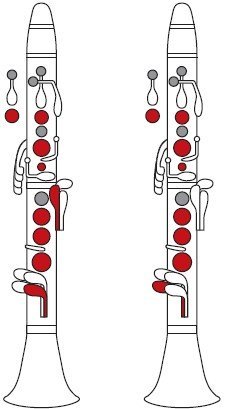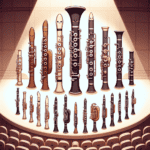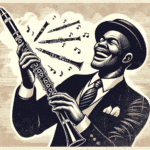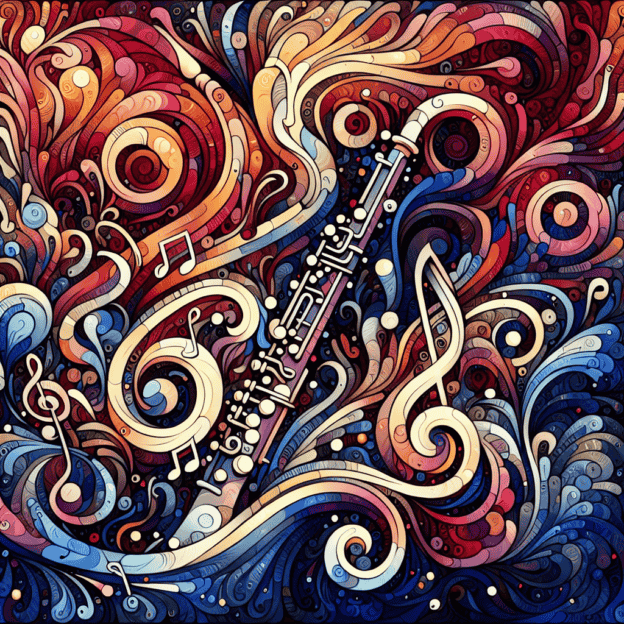Introduction to the E Bebop Major Scale
Ah, the clarinet! This beautiful woodwind instrument has a rich history, and part of that history is intertwined with the E Bebop Major Scale. It might sound a bit technical, but let's explore why this scale is so important, especially for clarinet players.

Clarinet Fingering Charts are always FREE at MartinFreres.net!
The Bebop Revolution
Bebop wasn't just a style of jazz; it was a revolution that changed music in the 1940s. The E Bebop Major Scale became a key element for many jazz musicians, including innovative clarinetists. This scale might not be one you hear about often, but it's incredibly influential!
What Makes the E Bebop Major Scale Special?
Unlike the traditional major scale, which has a sequence of whole and half steps, the E Bebop Major Scale adds an extra note: the flat seventh. This change creates a more fluid and jazzy sound that allows musicians to improvise freely. Picture yourself bending notes or using a flutter-tongue technique to capture that unique bebop sound!
| Traditional Major Scale | E Bebop Major Scale |
|---|---|
| E, F?, G?, A, B, C?, D?, E | E, F?, G?, A, B, C?, D, D?, E |
Jazz Legends and the E Bebop Major Scale
Jazz icons like Charlie Parker and Dizzy Gillespie saw the value of this scale. It allowed them to express complex emotions and showcase their improvisation skills. While the clarinet often takes a back seat to saxophones or trumpets in jazz, the E Bebop Major Scale has helped clarinetists create their own unique space in the genre.
The Structure of the E Bebop Major Scale
When you play this scale, you'll hear these notes: E, F?, G?, A, B, C, D, E, and a flat seventh (D). Adding this flat seventh is what sets it apart from a regular major scale—it's the secret ingredient that gives bebop its distinctive flavor. This small change can create exciting musical moments in your playing.
Improvisation with the E Bebop Major Scale
For those interested in improvisation, learning the E Bebop Major Scale can open up new possibilities. You can use this scale to create melodies that capture the spirit of jazz and showcase your clarinet skills. Imagine yourself on stage, using just this scale to create music that excites the audience!
The Historical Context of the E Bebop Major Scale
To fully appreciate the impact of the E Bebop Major Scale, we need to look at its history. After World War II, jazz evolved, and bebop brought a new, modern approach to music. Bebop musicians weren't just playing; they were creating a new musical language. The E Bebop Major Scale was an important part of their toolkit.
The Modern Legacy of the E Bebop Major Scale
Today, young clarinetists still use this scale to explore both modern jazz and classical crossover styles. It's an important part of music education. When students learn the E Bebop Major Scale, they're connecting with an important piece of musical history and keeping it alive for future generations.
Clarinet Innovators in Bebop
As we celebrate the clarinet's role in music, we should remember innovators like Benny Goodman and Artie Shaw. They were crucial in bringing the clarinet to the forefront of jazz, and they also embraced modern elements like the E Bebop Major Scale. Picture a lively jazz club—these legends brought that energy to life with their clarinets, playing bebop tunes!
Conclusion
The E Bebop Major Scale is more than just another scale to learn; it's a part of music history waiting for you to explore. So grab your clarinet, try out this scale, and experience the exciting world of bebop! Who knows? You might just create the next great jazz piece!
Table of Contents
- Introduction to the E Bebop Major Scale
- The Bebop Revolution
- What Makes the E Bebop Major Scale Special?
- Jazz Legends and the E Bebop Major Scale
- The Structure of the E Bebop Major Scale
- Improvisation with the E Bebop Major Scale
- The Historical Context of the E Bebop Major Scale
- The Modern Legacy of the E Bebop Major Scale
- Clarinet Innovators in Bebop
- Conclusion







